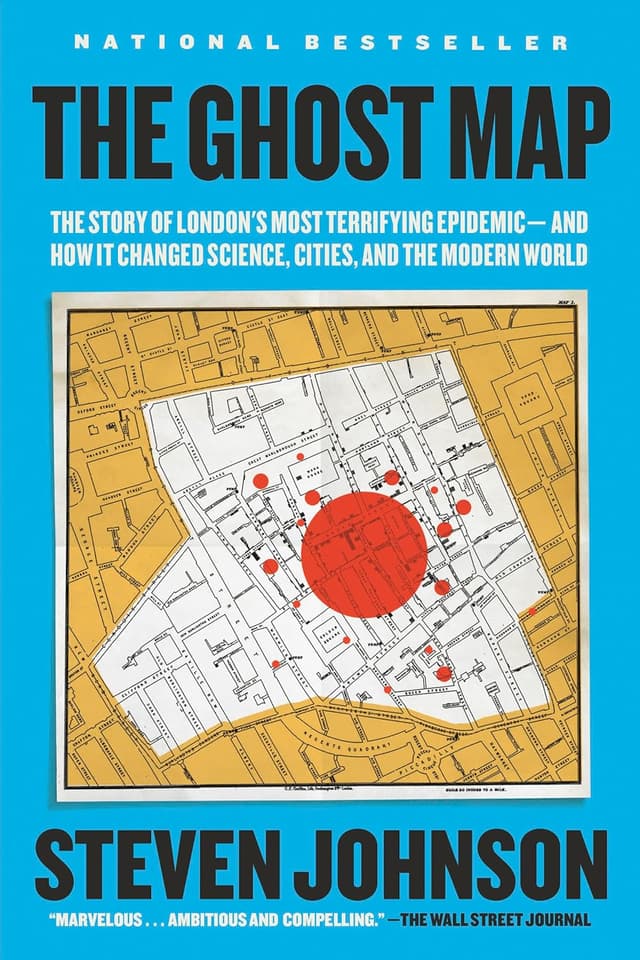Ryan Anderson | December 7, 2023
The CompStat Edition
On data, decision-making, and optimization.
Recommended Products

A book about how a mapping exercise helped slow a cholera outbreak in London.
Ryan Anderson (RJA) is a freelance marketing exec based in Atlanta, GA. He’s written WITIs about counties, statistical paradoxes, green hydrogen, sound in sports, and more. He has strong thoughts about how to build systems that enable performance and growth.
Ryan here. For those of us of a certain age, and with a certain television appetite, hearing “CompStat” makes you think of HBO’s untouchable police drama, The Wire. The show highlights a system called COMSTAT (styled in all caps and without the ‘P’ in the show) as a major source of dysfunction in the police force and greater city government. The police brass berated officers for their poor performance (multiple times), the officers went about juking the stats to please their bosses, and the dysfunction even spread to the school system.
“Making robberies into larcenies… You juke the stats, and majors become colonels.”
This gets into Goodhart’s Law; the idea that once a metric becomes a goal it ceases to be a reliable measure of performance. Noah wrote about Goodhart’s Law a couple years ago if you want to dive in deeper, and even speaks to how it impacted CompStat.
Why Is This Interesting
The actual history of CompStat goes back to the 1990s when a New York City transit police officer named Jack Maple tried putting pins in a map to see if there were any patterns to the crimes being reported. The idea was that with better data, reviewed more often, police could make better decisions about how to reduce crime.
Lo and behold, this visual representation allowed the police force to allocate their resources based on data and coincided with a 27% drop in crime. The exact causes of that drop in crime, and the causes’ relative impact, are widely studied and debated. But the value of knowing what is happening, where, and how often is a critical part of taking action. Short sidenote: there is a fantastic book called The Ghost Map (that Noah gifted to me) about how a similar mapping exercise helped slow a cholera outbreak in London.
While most CompStat coverage focuses on data collection and measurement (and what can go wrong there), when I started to dig in more, it was the 4 principles behind CompStat that stood out to me. And not because “it revolutionized policing” or anything like that. But rather because executed faithfully, these principles can be a framework for just about any kind of ongoing management and optimization.
Principle 1: Timely and Accurate Data
If you plan to use data to inform your decision-making, you need to be confident in the data you’re looking at. And in order to make those decisions, that data must be gathered, processed, and available quickly.
Principle 2: Rapid Deployment of Resources
Timely and trusted data allows you to focus on allocating your resources. That may look like assigning police officers to specific beats, dividing marketing budget across product lines and advertising channels, or diverting raw materials to specific manufacturing lines.
Principle 3: Effective Tactics
The people receiving those resources need to know what to do with them, or the process breaks down here. In the marketing example above, that means each product or channel owner knows how to effectively spend budget to maximize their return.
Principle 4: Relentless Followup and Extension
The final piece of the puzzle and often the most uncomfortable for people new to an iterative process. These conversations aren’t meant for criticism, but rather to make sure everybody has a chance to identify opportunities to improve what they’ve done.
Laid out without the overarching theme of policing, it’s easy to see how someone could apply this to any number of processes. Who would’ve thought that the baseline process for every “test and learn” marketing program would mirror police tactics? (RJA)
—
Thanks for reading,
Noah (NRB) & Colin (CJN) & Ryan (RJA)
—
Why is this interesting? is a daily email from Noah Brier & Colin Nagy (and friends!) about interesting things. If you’ve enjoyed this edition, please consider forwarding it to a friend. If you’re reading it for the first time, consider subscribing.
